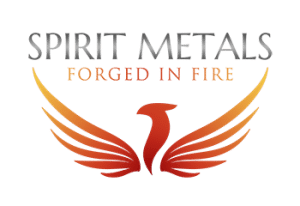What is the difference between standard A36, AR, and ABS Plate?
Your project calls for steel plate, but when you call your supplier, they ask, “are you looking for A36, AR, or ABS plate?” Here we will discuss the differences and when your project may call for AR plate over ABS or standard plate. However, keep in mind there are various ASTM classifications. As always, it depends on the industry you are in and the application of the material. When in doubt always refer to your plans or the industry-specific standard.
A36 Plate
Most standard projects will call for A36 grade plate. It is used for base plates, stiffener plates, flanges, and other structural applications. From plate, you can cut to spec flat bar, or if you need a piece of angle and it isn’t offered, you can form it from plate to meet your needs. The most common applications are in commercial and standard construction. However, steel plate has a wide variety of applications outside of building such as marine and offshore equipment, pressure vessels, and military use.
Plate thickness’ start at 3/16” and can go as thick as ten inches. Standard plate sizes that are 48″ x 96″ and 60″ x 120″. However, steel plate can be purchased in sizes as large as 120″ x 480″. At Spirit Metals, we work with the mills on all custom sizes to meet your project needs.
Spirit Metals offers plates in all sizes and alloys, as needed. If you are looking for road plate, we can provide you with custom sizes and widths. Not sure, contact us today, and we are happy to do the leg work for you and provide a comprehensive quote.
AR Plate
Many people ask what is AR plate and why would I need that over the standard A36 or A572? AR plate is a high carbon alloy plate. AR stands for Abrasion Resistant and will come in designations like AR400 or AR500 and usually offered as-rolled versus normalized (AR 200, 235 and 600 are also available). When a project calls for AR plate, it is generally because of the length of wear on the plate is minimized. For instance, you would not need AR plate to create base plates at the bottom of a structural column. However, if you are building a gun range or want a piece of hardy steel plate for target practice, you will want the AR plates for their long wear and life cycle. In some cases, AR 500 plate is cut to spec and used in bulletproof vests, but you want to make sure that your material meets the safety standard requirements. The hardness range of AR400 plate is 360-440 BHN (Brinell Hardness), and AR500 has a BHN rating of 550.
ABS Plate
ABS plate is used quite explicitly in the maritime industry and is certified by the American Bureau of Shipyards. It is the material used in hulls, and other structural parts of a ship, in barges, offshore drilling platforms, and different types of marine equipment. It comes in a variety of grades including grades DH an AH, which are normalized to improve its rigor. It comes in thicknesses as thin as a ¼” and up to 3”, and standard sizes can be cut from larger stock sizes of 96” x 240” or 120” x 480”.
Plate steel is a normal part of our world, it is found on roadway projects, or as supports to the structural steel in your home or business. Whatever your need, Spirit Metals can help! Our primary goal is to understand the needs of your business, your project, and your budget, and partner with you to achieve those goals. Call us today at 813-444-2022 or email, and one of our dedicated team members will assist you!
Your project calls for steel plate, but when you call your supplier, they ask, “are you looking for A36, AR, or ABS plate?” Here we will discuss the differences and when your project may call for AR plate over ABS or standard plate. However, keep in mind there are various ASTM classifications. As always, it depends on the industry you are in and the application of the material. When in doubt always refer to your plans or the industry-specific standard.
A36 Plate
Most standard projects will call for A36 grade plate. It is used for base plates, stiffener plates, flanges, and other structural applications. From plate, you can cut to spec flat bar, or if you need a piece of angle and it isn’t offered, you can form it from plate to meet your needs. The most common applications are in commercial and standard construction. However, steel plate has a wide variety of applications outside of building such as marine and offshore equipment, pressure vessels, and military use.
Plate thickness’ start at 3/16” and can go as thick as ten inches. Standard plate sizes that are 48″ x 96″ and 60″ x 120″. However, steel plate can be purchased in sizes as large as 120″ x 480″. At Spirit Metals, we work with the mills on all custom sizes to meet your project needs.
Spirit Metals offers plates in all sizes and alloys, as needed. If you are looking for road plate, we can provide you with custom sizes and widths. Not sure, contact us today, and we are happy to do the leg work for you and provide a comprehensive quote.
AR Plate
Many people ask what is AR plate and why would I need that over the standard A36 or A572? AR plate is a high carbon alloy plate. AR stands for Abrasion Resistant and will come in designations like AR400 or AR500 and usually offered as-rolled versus normalized (AR 200, 235 and 600 are also available). When a project calls for AR plate, it is generally because of the length of wear on the plate is minimized. For instance, you would not need AR plate to create base plates at the bottom of a structural column. However, if you are building a gun range or want a piece of hardy steel plate for target practice, you will want the AR plates for their long wear and life cycle. In some cases, AR 500 plate is cut to spec and used in bulletproof vests, but you want to make sure that your material meets the safety standard requirements. The hardness range of AR400 plate is 360-440 BHN (Brinell Hardness), and AR500 has a BHN rating of 550.
ABS Plate
ABS plate is used quite explicitly in the maritime industry and is certified by the American Bureau of Shipyards. It is the material used in hulls, and other structural parts of a ship, in barges, offshore drilling platforms, and different types of marine equipment. It comes in a variety of grades including grades DH an AH, which are normalized to improve its rigor. It comes in thicknesses as thin as a ¼” and up to 3”, and standard sizes can be cut from larger stock sizes of 96” x 240” or 120” x 480”.
Plate steel is a normal part of our world, it is found on roadway projects, or as supports to the structural steel in your home or business. Whatever your need, Spirit Metals can help! Our primary goal is to understand the needs of your business, your project, and your budget, and partner with you to achieve those goals. Call us today at 813-444-2022 or email, and one of our dedicated team members will assist you!

